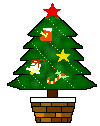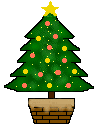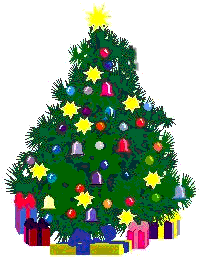
Choosing a Xmas Tree

|
|
Choosing a Xmas Tree |
|
The Christmas tree is the centrepiece of many Christmas morning celebrations. After all, it's the place where all the presents are found. Christmas trees have been a part of the christmas celebration for more than 400 years. Nearly all of today's trees are grown on plantations, everywhere in the country. The National Christmas Tree Association suggests you do a freshness test for your tree. If you run your fingers along a branch, or if you shake the tree, you should see some brown needles fall -- but not too many. Then, after you've chosen your tree, keep it in a sheltered, unheated area until you're ready to decorate it. And make a fresh, straight cut along the trunk, and put the tree in a stand that holds a gallon or more of water. If the water level falls below the base of the tree, a seal of dried sap will form over the cut stump in just a few hours. So you'll need to make a new cut on the stump if you want the tree to absorb any more water.
|
|
Why do we bring our tree inside? |
|
We bring a tree in the house because :-
German pagans believed that evil spirits caused the trees and other plants to die during the winter. The evergreen tree appeared to have special powers, and so was honored throughout the winter because it could resist the forces of cold and death. Because they believed that evil spirits didn't like to be where evergreens were, people began the custom of bringing evergreen boughs or even whole trees into the house for protection.
They also believe the evergreen was good for fertility. I'm kind of thinking that staying indoors and trying to keep warm might have had something to do with fertility, too.,
ha ha !
How the tree came to represent the birth of Christ is a matter of some contention, but appears that the first Biblical relationship to the evergreen was when apples were hung upon it to represent Adam and Eve's troubles in the Garden of Eden. Later the star was added to remind folks of the star in the East.
